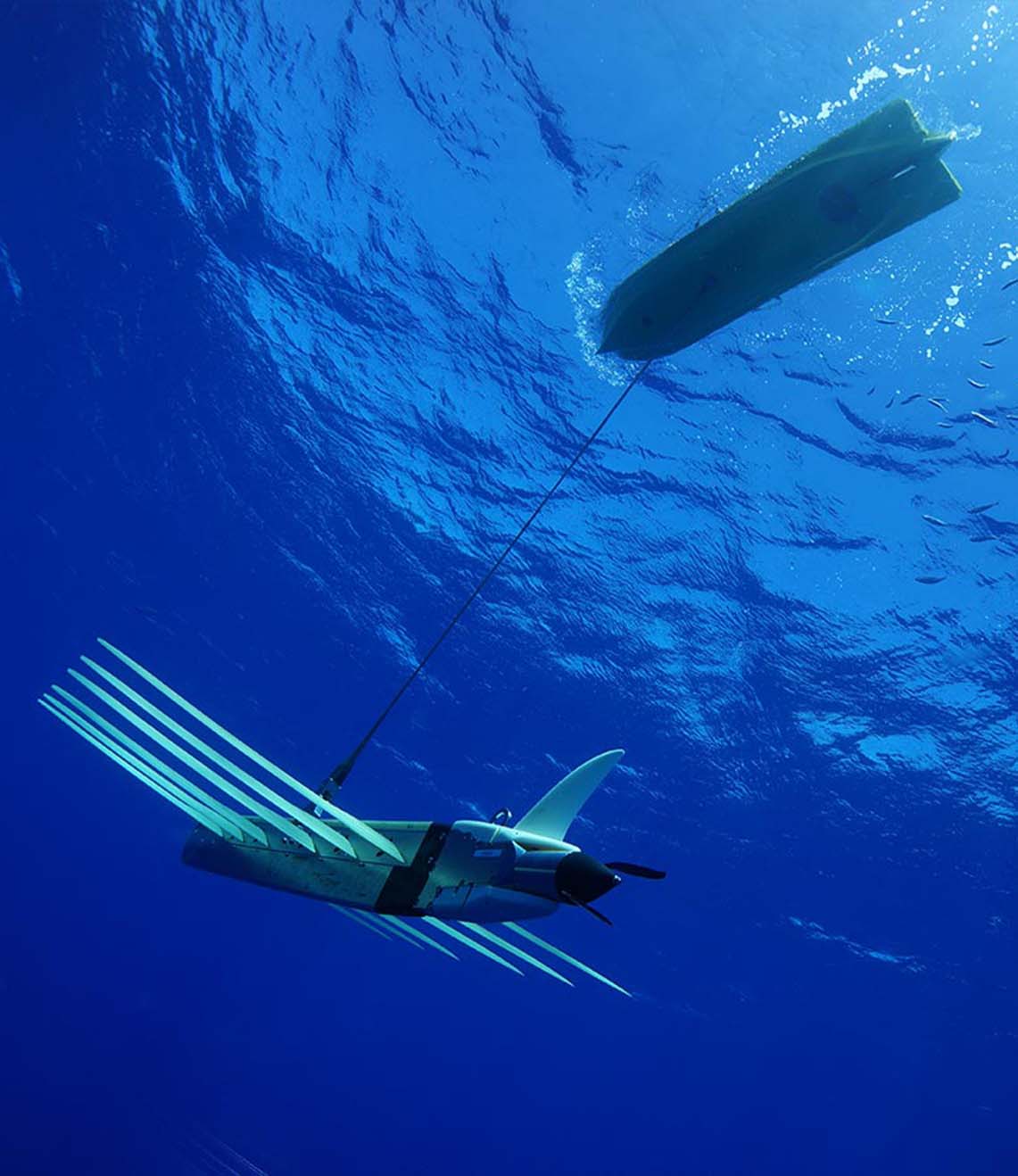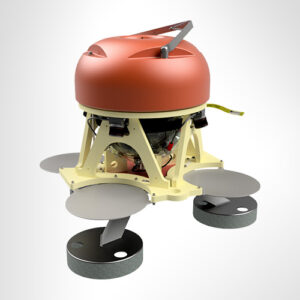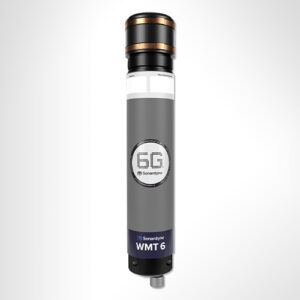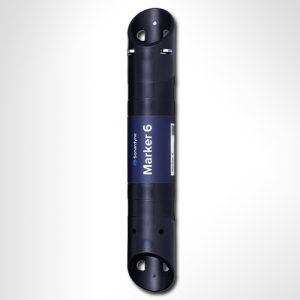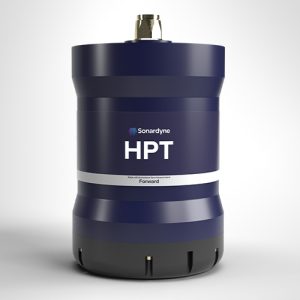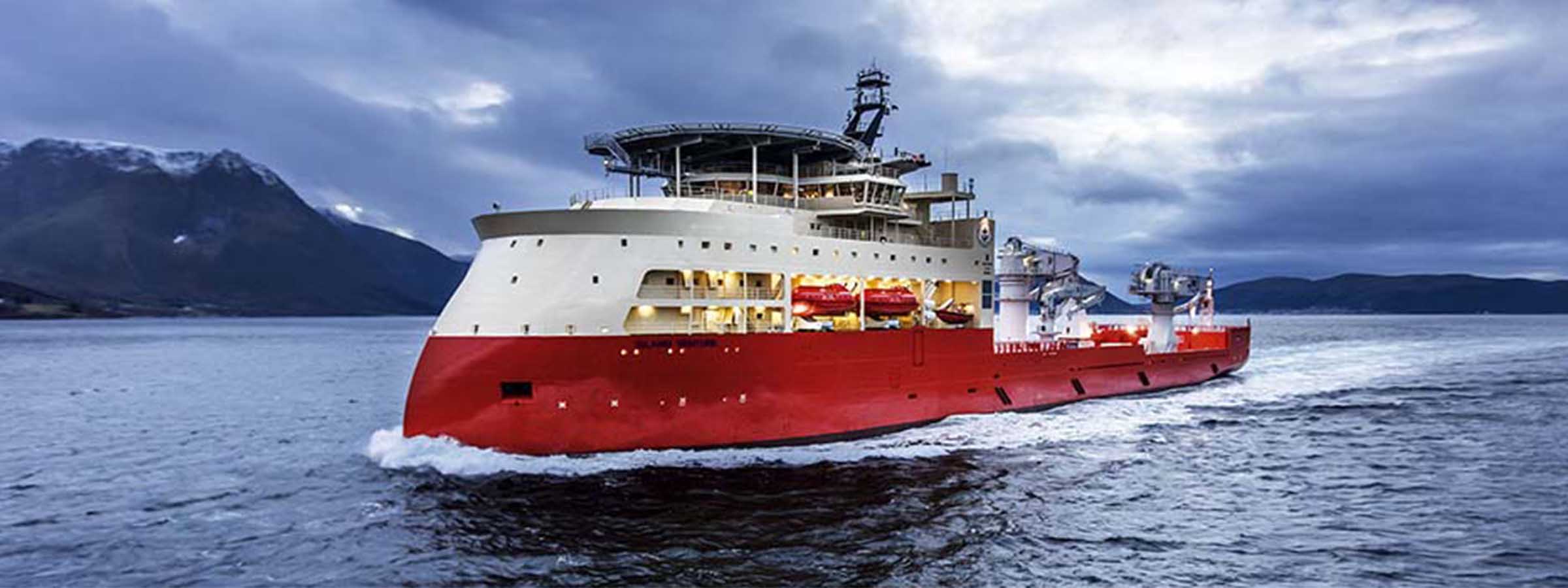
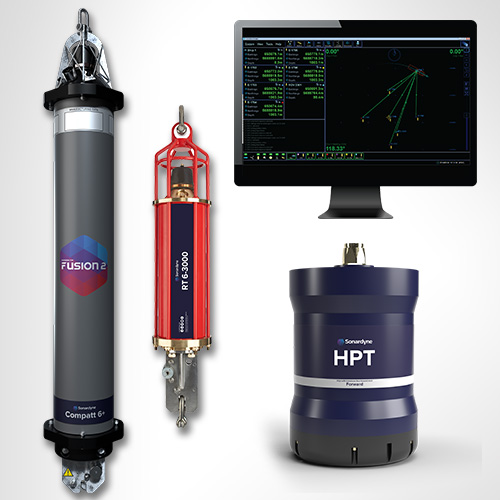
Ranger 2 Standard. Track everything, in any depth, from any vessel. Track a towfish, position an ROV, dynamically position your vessel, communicate with an AUV – or do all of this simultaneously. It's anything but standard.
At a glance
Tracks multiple targets to 11 km; ROVs, AUVs, deep towed bodies
Compatible with all makes of DP system – GE, Kongsberg, MT
System accuracy: when fully optimised it will deliver 0.04% of slant range
Works with a global inventory of pre-deployed Sonardyne 6G hardware
Configurations available for USV and temporary vessel installations
Valuable features included as standard; incorporates 30 years+ of USBL know-how
Need help with your Ranger 2 configuration?
We can make that happen
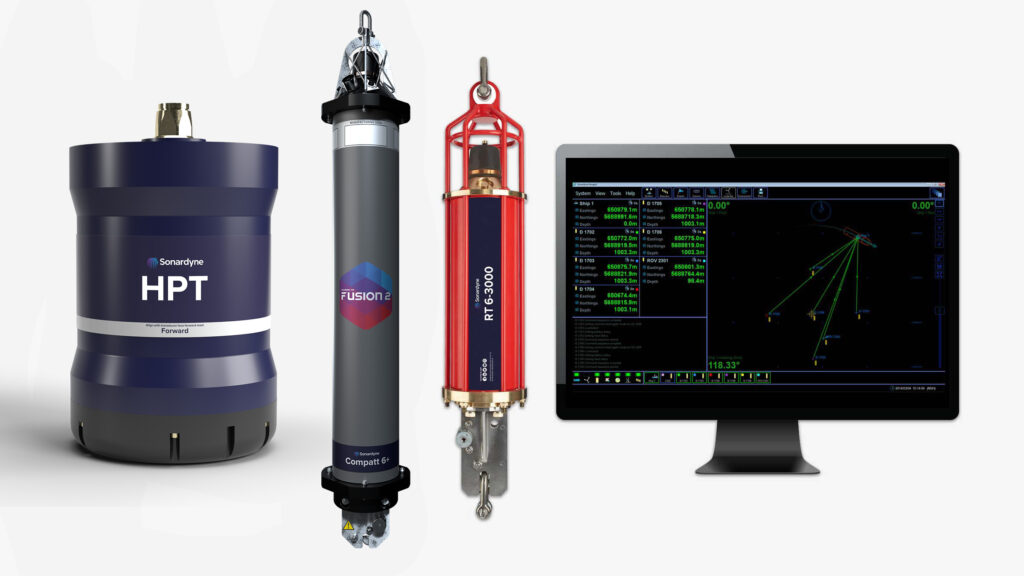
Ranger 2 is available with a range of USBLs transceivers, each optimised for different use-case scenarios
There's a global pool of Sonardyne 6G transponders which you can use with Ranger 2, including acoustic releases
Ranger 2 software is easy to learn and simple to use - perfect if you are new to USBL technology
Ranger 2 software offers a range of industry standard output telegrams and is compatible with makes of DP system
Benefits of Ranger 2 USBL for your operations
For energy
Can be used for both survey and construction phases. Supports complex tracking scenarios such as structures and vehicles with multiple transponders and multiple remote offsets.
For defence
Provides you with the capability to track every move - and communicate with - all of your off-board assets; divers, towed platforms, unattended sensors and uncrewed underwater vehicles.
For science
Configurable to work in the LMF band enabling you to track targets to beyond 11 km. Integrated command and control of Sonardyne acoustic releases to track and moor instruments strings.
Overview
Ranger 2 has the versatility you need, at the investment level you can afford, to get your project completed fast and efficiently. It’s engineered like no other USBL on the market.
Every survey, research, recovery, construction and data collection project is different; different water depths, different vessels – manned and unmanned – and different targets to track and communicate with. But whatever you’re doing and wherever your working, investing in Ranger 2 – the most capable USBL technology available on the market – means your organisation can meet any operational requirement.
Ranger 2 comes with an impressive list of standard features, our award-winning 6G (sixth generation) acoustic hardware platform and Sonardyne Wideband 2 digital signal architecture. It provides stable and repeatable acoustic position referencing for your ship’s DP system, including those from GE, Kongsberg, MT, Navis, Thrustmaster and Wärtsilä.
As your needs grow and become more complex, bolt-on software packs unlock additional capability and protect your investment. Take the DP pack; it enables acoustic ranging to be aided by our inertial navigation technology (DP-INS).
But Ranger 2 is more than just an acoustic tracking and DP reference system. It also supports robust two-way data telemetry allowing you to command our range of seafloor deployed long-endurance sensors and recover the logged data inside them.
The system is made up of software, a vessel-mounted transceiver and in-water transponders. Ranger 2 software brings together all the features surveyors, scientists and DPOs told us they wanted to see. The transceiver, called HPT, is available in a range of different designs to suit your operations; deep, shallow and long layback. If you need a solution for a vessel of opportunity, our pre-calibrated, all-in-one Gyro USBL transceiver is perfect.
The flexibility of the Ranger 2 family is further extended by our range of transponders to support a wide variety of applications. WMT is a high power transponder capable of operations to 7,000 m, while AvTrak 6 is our most capable acoustic vehicle instrument, combining the functions of a USBL transponder, LBL transceiver and modem for demanding applications such as AUV operations.

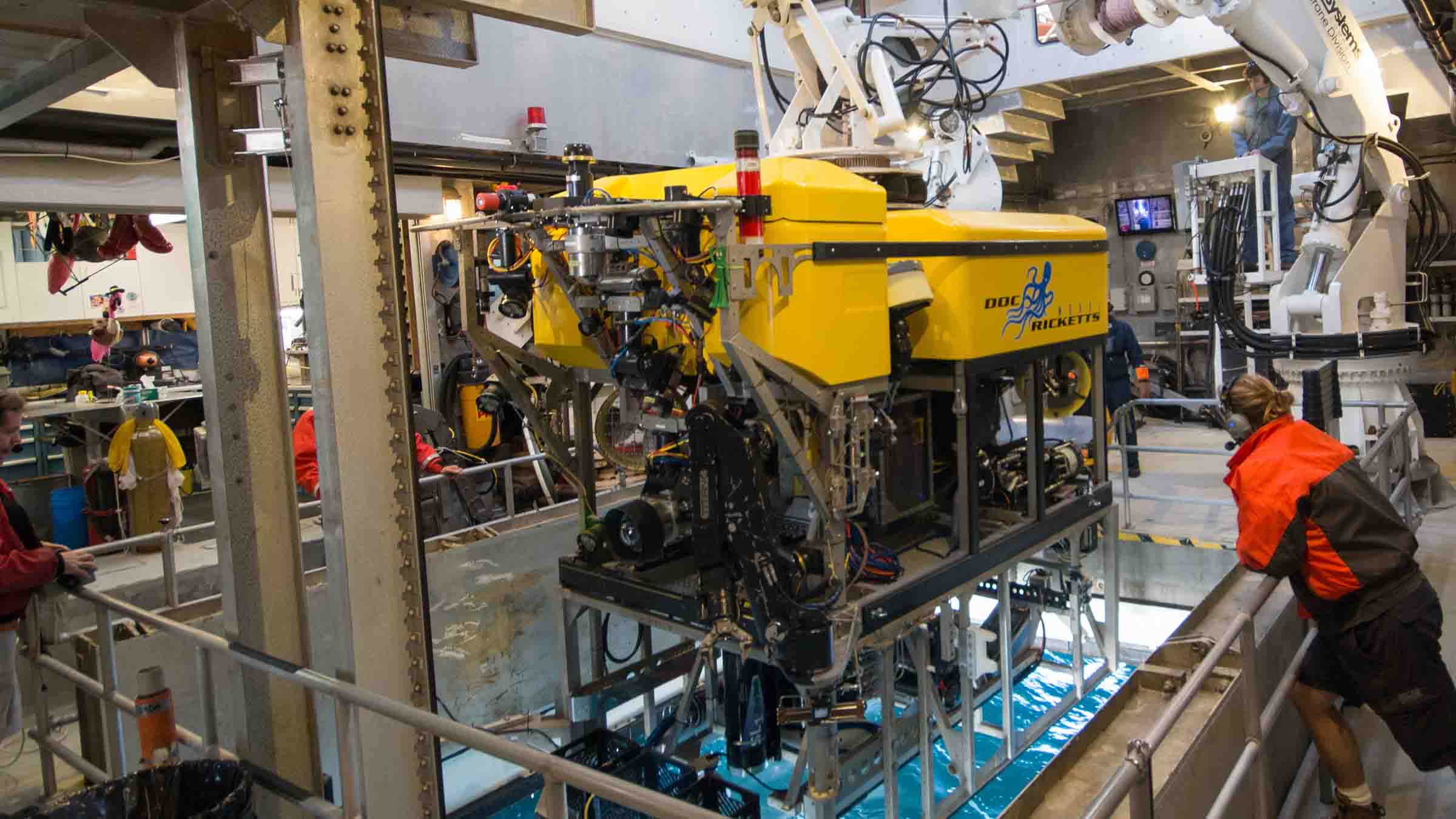
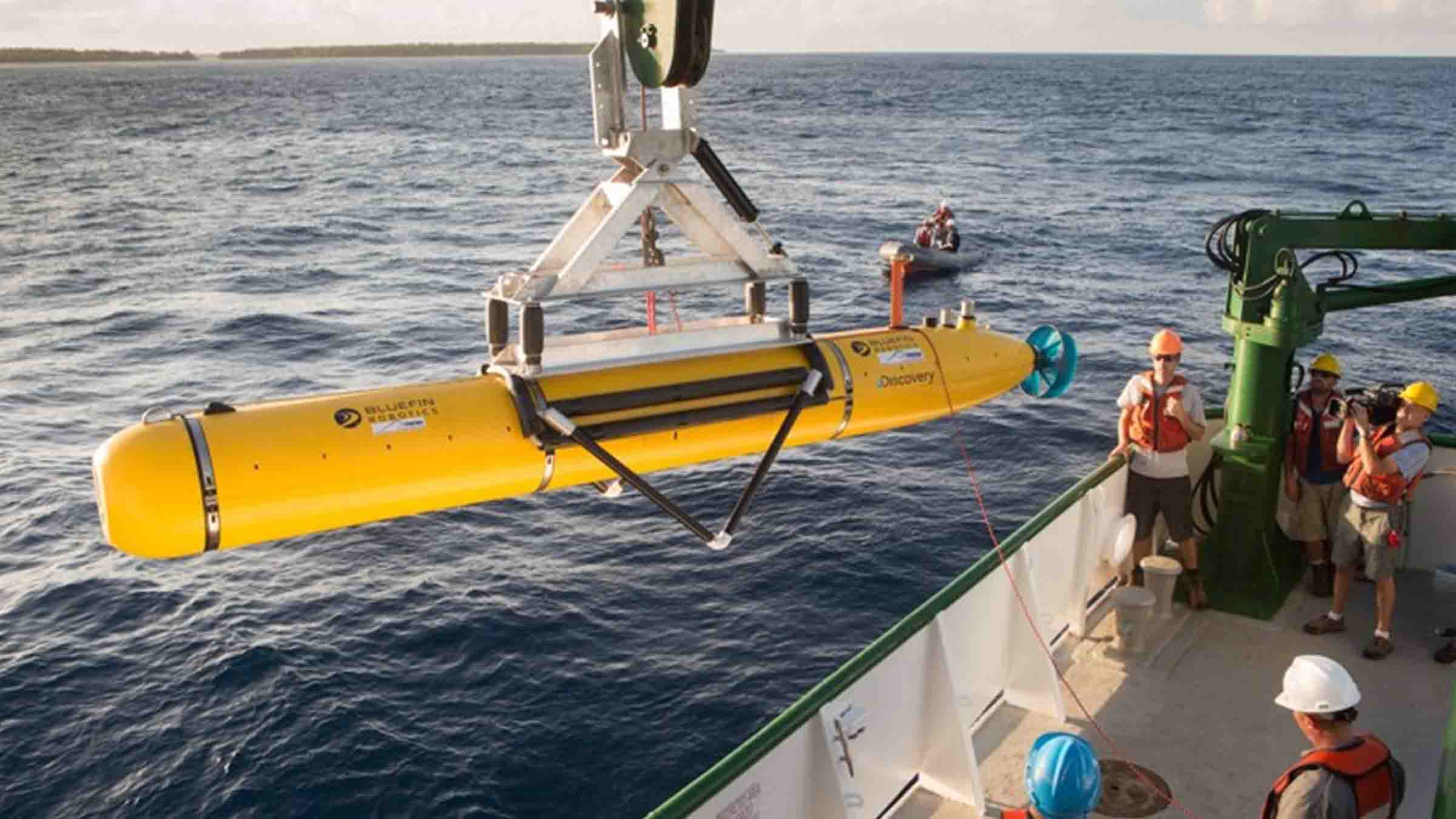

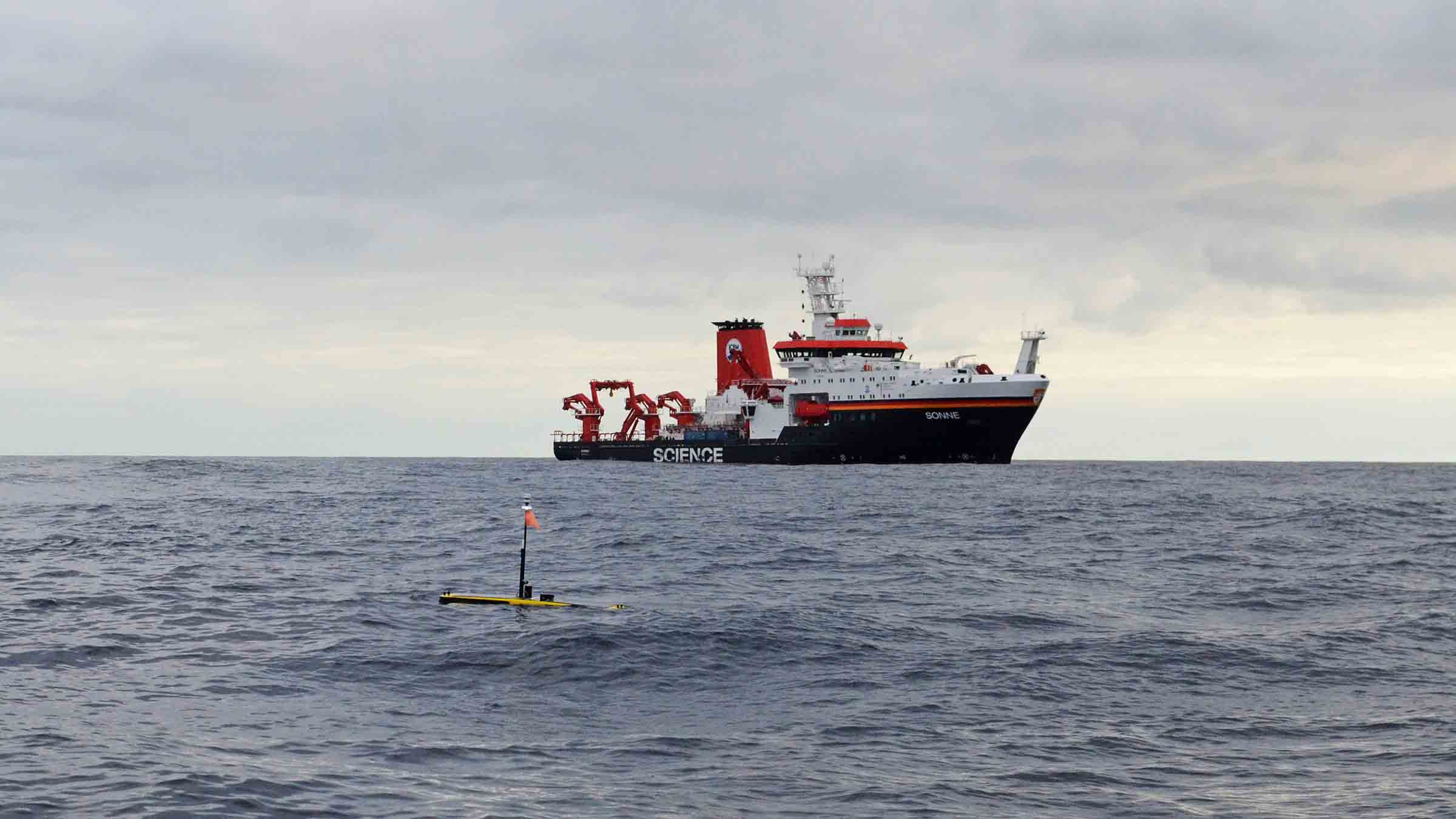




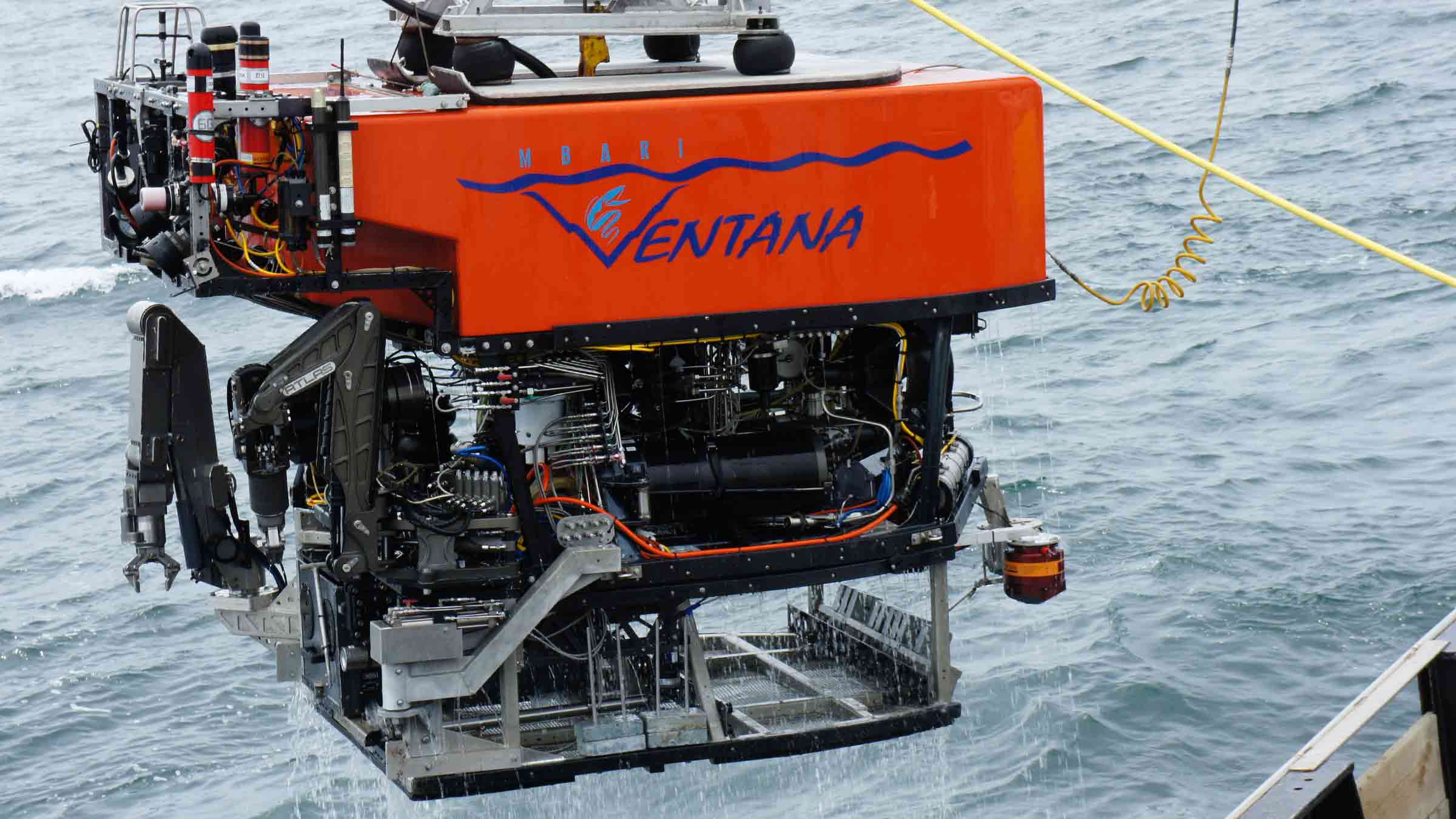
Why invest
Design
-
The most powerful USBL system on the market
-
Incorporates 30 years of USBL innovation and know-how
-
Recommended for installation on large vessels and USVs
-
Global vessel track record; offshore, research, cable-lay, salvage and naval
-
Shares common platform with other Sonardyne USBLs
Performance
-
Up to 0.04% of slant range system accuracy
-
Up to 99 targets tracked, simultaneously
-
Up to 11,000 m tracking range (LMF)
-
1 Hz position update rate
-
Support all industry standard DP telegrams
-
Supports acoustically-aided INS
Acoustic
-
MF frequency (19-34 kHz) or LMF (14-19.5 kHz)
-
Sonardyne Wideband 2 digital acoustics for reliable performance in both shallow and deep environments
-
Supports Sonardyne Messaging Service for data exchange up to 9,000 bps
-
Compatible with a wide range of 6G transponders
Ownership
-
What’s in the box: HPT 5000 / 7000 / Gyro USBL, deck cables, software, manual
-
Warranty: 1 year return to Sonardyne service centre
-
ITAR Controlled: No
-
UK Export License: Required
Ranger 2 USBL case studies
Energy
Long ROV excursions, high elevation tracking, noisy waters – not a problem
ROV pipeline inspections in shallow water – with long excursions and high elevation tracking requirements – can pose major challenges for even the best USBL systems. With SPRINT-Nav in the mix, it’s no longer an issue. Tavis Letherby, Survey/ROV Manager at CCC (Underwater Engineering), explains.
Client: CCC

Ocean Science
Extending the limits of autonomous systems
Improving the endurance and navigational precision of underwater autonomous systems, while also reducing costs, could provide disruptive capability in the subsea monitoring and inspection space. Geraint West, Ocean Science Head of Market, explores the challenges and solutions.
Client: National Oceanography Centre (NOC) and L3Harris ASV

Ocean Science
Ranger 2 – it’s anything but standard.
With our Ranger 2 permanently installed onboard the RRS James Cook, a team from the UK’s National Oceanography Centre (NOC) was able to significantly reduce the uncertainty around the position of their autonomous underwater vehicle (AUV).
Client: National Oceanographic Centre
Resources
| Feature | Specification |
|---|---|
| Design | The most powerful USBL system on the market |
| Incorporates 30 years of USBL innovation and know-how | |
| Recommended for installation on large vessels and USVs | |
| Global vessel track record; offshore, research, cable-lay, salvage and naval | |
| Shares common platform with other Sonardyne USBLs | |
| Performance | Up to 0.04% of slant range system accuracy |
| Up to 99 targets tracked, simultaneously | |
| Up to 11,000 m tracking range (LMF) | |
| 1 Hz position update rate | |
| Support all industry standard DP telegrams | |
| Supports acoustically-aided INS | |
| Acoustics | MF frequency (19-34 kHz) or LMF (14-19.5 kHz) |
| Sonardyne Wideband 2 digital acoustics for reliable performance in both shallow and deep environments | |
| Supports Sonardyne Messaging Service for data exchange up to 9,000 bps | |
| Compatible with a wide range of 6G transponders |



